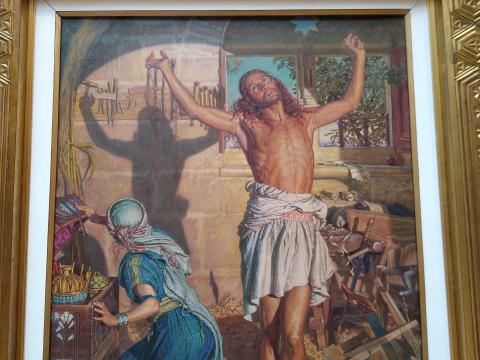The Shadow of Death (1873)

When William Holman Hunt painted The Shadow of Death in the early 1870s, he wished to convey a story while conforming to art critic John Ruskin’s maxim about being faithful to detail and observation. The trinkets and tools of the scene are just as faithfully represented as Jesus Himself, the painting’s subject. While He appears to be mentally measuring the size of some carpentry, Mary turns to her right and beholds the shadow of crucifixion on the back wall. Interestingly, she has been rummaging inside an ornate chest in which expensive items are found- almost certainly the magi’s gifts. Yet before her Son is to wear that eastern crown, He must first be crucified. Nearly all Jews of the first-century expected a warrior Messiah, a political liberator. Yet the Lord Jesus first came as sacrificial victim, offering ransom for many. On His return shall He wear the victor’s laurel and conqueror’s crown. Mary turns away from the glory and beholds the pain- so we sinners who were pained by sin might behold- and share- in His glory.
And I heard a loud voice from the throne saying, “Behold, the dwelling place of God is with man. He will dwell with them, and they will be his people, and God himself will be with them as their God. Rev 21:3, ESV
- Log in to post comments


 Sunday Worship 10.45am & 6.00pm
Sunday Worship 10.45am & 6.00pm